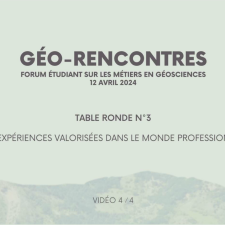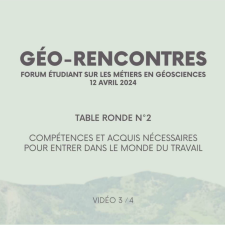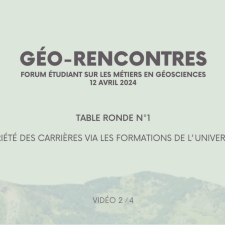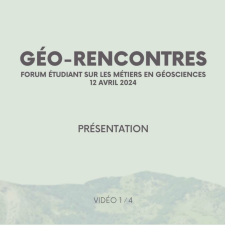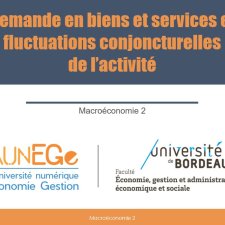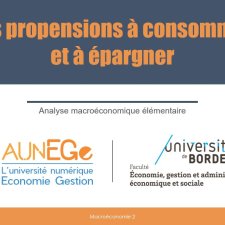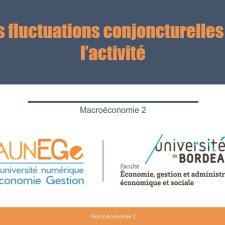Chapitres
Notice
The Largest Lakes and reservoirs of Russia as a Priority Water Ressource for Society
- document 1 document 2 document 3
- niveau 1 niveau 2 niveau 3
Descriptif
Global change for the last 25 years drives to important changes in hydrometeorological regime in different regions, reflecting water resources change of the larges reservoirs and lakes of Russia and of lakes’ district with more than 460,000 small and middle size lakes (North-western part of Russia and Finland. Interdisciplinary approaches in water resources research include as methods of traditional hydrology and climatology as paleoclimatology and economy. Decrease in the water level of largest Lakes (Ladoga, Onega, Ilmen) by 35-70 cm has been registered over the 1990s, the warmest decade in the time series. At the same time inflow to the largest reservoirs of Volga River and of Kama River increased by about 30%. Only inflow to the Tsimlyanskoye Reservoir (River Don) exhibits tendency to decrease (10% lower than normal). In spite of the fact that reservoirs are water bodies with a regulated water level, catastrophic inflow to reservoirs or lack of inflow can cause serious economic and social after-effects. The observed increase of inflow to the Volga-Kama Reservoirs results in occurrence of situations when dams have not been able to regulate water storage carefully last decades. As a result, the inflow to reservoirs of the Volga-Kama cascade was 50 % higher in 1991 than mean value and vast areas have been flooded, 102 dams have been destroyed, total economic losses has been equal to 552,5 million rubles. Therefore we shouldn’t ignore the up-to-date and expected changes in the hydrological regime of inland water bodies as one of the most sufficient elements of the sustainable development of human society. A steady-state hydrological model has been developed for evaluation of changes in inflow to reservoirs and lakes with the progress of global warming (Lemeshko, 2002). The paleoclimatic reconstruction for global warming on 2 deg. have been used as empirical scenario. This scale of climate change corresponds to warm epoch of the past, considered as analog of future climate: the Last Interglacial-Eem (125 KA B.P.) (Borzenkova, 1992). Calculations have shown, that average annual runoff from the catchment of 71 Ladoga and Onega should increase for 80 mm, inflow to reservoirs of Volga- Kama cascade should increase by 35-60 mm, and to the Tsimlyanskoye Reservoir (River Don) for 50 mm. The combined assessment of regional peculiarities for the period of hydrometric observations with the data of paleoclimatic scenario of Last interglacial, makes it possible to decrease existing sufficient uncertainty in the forecast of future changes in the hydrological regime of lakes and reservoirs. Changes of lakes’ level and inflow to reservoirs can have both positive and negative consequences for economic and social life. And, decrease of lakes’ level and inflow to inland water bodies, as a rule, has negative after-effects. First of all it is connected with deterioration of water supply. The increase of river runoff and inflow to reservoirs and a high lakes’ level can have both positive and negative consequences. So, it is favorable for water supply of the population, an agriculture, water-power engineering, etc., especially for the southern regions of European Russia. But it can result in flooding settlements, agricultural lands, erosion of the reservoir’s coasts, to bogging and degradation of a soil cover.
Intervention / Responsable scientifique
Dans la même collection
-
Long Term Climate Variability: from Past to Future and from Data to Models
GuiotJoëlData show that climate has always changed in the past, sometimes with a larger amplitude than what we experimented for two decades. But the main signatures of the anthopogenic forcing are the speed of
-
Detection and Attribution of Climate Change to Different Causes
PlantonSergeAccording to the last IPCC report, the most part of the observed increase in globally averaged temperatures since the mid-20th century is very likely due to the observed increase in anthropogenic
-
Setting Cumulative Emissions Targets to Reduce the Risk of "Dangerous" Climate Change
ZickfeldKirstenThe ultimate objective of climate change mitigation is to reduce the amount of anthropogenic greenhouse gas (GHG) emissions in order to achieve “stabilization of greenhouse gas concentrations in the
-
Turning Hazards into Ressources? Climate Change, Floods and Coastal Wetlands in the Costa Brava (No…
Serra-LlobetAnnaAccording to the IPCC Fourth Assessment, one of the most vulnerable areas in Europe are coastal zones. This is due to sea level rise combined with increased risks from storms. Coastal wetlands, in
-
Debate
HourcadeJean-CharlesSomervilleRichardSvedinUnoDuvalRomainThe European Science Foundation (ESF) and the French Foundation of the Maison des Sciences de l’Homme (FMSH) (within the Entre-Sciences programme) have agreed to jointly develop a new conference
-
Climatic Hazard Mitigation Through Risk and Resilience Committees in Nepal
Raj AryalKomalNepal lies in an ecologically fragile and seismic region with a history of devastating Glacier Lake Outburst Flood (GLOF), landslides and earthquakes. Increases in temperature could increase the
-
Debate
BergerA.GuiotJoëlMannMichael E.DanisPierre-AlainAmatoVincenzoThe European Science Foundation (ESF) and the French Foundation of the Maison des Sciences de l’Homme (FMSH) (within the Entre-Sciences programme) have agreed to jointly develop a new conference
-
The State of UK Climate Modelling
FisherJoshuaThe UK recently invested £23 million (~US$40 million) in a program in Quantifying and Understanding the Earth SysTem (QUEST). The final product of this investment is the state-of-the-art QUEST Earth
-
Climate, Geography and Macroeconomics: Revised Data, Refined Analysis and New Findings
FüsselHans-MartinAssessments of social and economic impacts of climate change are primarily based on the results of biophysical climate impact models, which are aggregated, extrapolated and/or valued in monetary terms
-
Present-Day Geomorphological Changes in Polar Regions
ZwolińskiZbigniewThe landscape uniqueness of polar zone manifests itself in morphological traces of older glaciations and marine transgressions, areas of present-day glaciations, multi-year permafrost, multi-year snow
-
The Sustainability of Kyoto's Architecture: Where Did the Victims of Climate Change Go?
DupuisJohanncept of “expropriation” in the case of territories exposed to a rise in sea levels. The premise of my project is that although future generations in all countries will be affected by climate change,
-
IPCC Working Group II
ChanzyAndréThe European Science Foundation (ESF) and the French Foundation of the Maison des Sciences de l’Homme (FMSH) (within the Entre-Sciences programme) have agreed to jointly develop a new conference
Sur le même thème
-
Géo-Rencontres 2024 / Les expériences valorisées dans le monde professionnel
LilloEmmaAraujoJulieHuartFlorianDubreuRomainBuquetDamienChazalLauraBorieMarianeForum sur les métiers en géosciences organisé par les étudiants du CMI Ingénierie Géologique et Civile, Université de Bordeaux, 12 avril 2024
-
Géo-Rencontres 2024 / Compétences et acquis nécessaires pour entrer dans le monde du travail
BrinonJulietteAmoleFili-FenuaPretouFrédéricCampetHugoLiébauxAlbinDe AlemeidaMarie-LouPoirierAymericDufrenoyAudreyForum sur les métiers en géosciences organisé par les étudiants du CMI Ingénierie Géologique et Civile, Université de Bordeaux, 12 avril 2024
-
Géo-Rencontres 2024 / Variété des carrières via les formations de l'université
InguimbertDianeLacazeRomaneLemaitreLaurieChazalLauraMontjeanPascalPoudevigneJacquesPortefaixFrédéricForum sur les métiers en géosciences organisé par les étudiants du CMI Ingénierie Géologique et Civile, Université de Bordeaux, 12 avril 2024
-
Géo-Rencontres 2024 / Présentation
LatasteJean-FrançoisLavieThéoForum sur les métiers en géosciences organisé par les étudiants du CMI Ingénierie Géologique et Civile, Université de Bordeaux, 12 avril 2024
-
Tokyo, plus grande « ville » au monde : aménager et gouverner la démesure
Languillon-AusselRaphaëlAvec ses quelques trente-cinq millions d’habitants, Tokyo est la « ville » la plus peuplée au monde, et l’une des métropoles les plus riches. Cette présentation vise à décrire, analyser et expliquer,
-
Demande en biens et services et fluctuations conjoncturelles
Maveyraud-TricoireSamuelDemande en biens et services et fluctuations conjoncturelles
-
-
-
Les propensions à consommer et à épargner
Maveyraud-TricoireSamuelLes propensions à consommer et à épargner
-
Le marché des biens et services à court terme
Maveyraud-TricoireSamuelLe marché des biens et services à court terme
-
Les fluctuations conjoncturelles de l’activité
Maveyraud-TricoireSamuelLes fluctuations conjoncturelles de l’activité
-
Les fluctuations du revenu courant et le lissage de la consommation
Maveyraud-TricoireSamuelLes fluctuations du revenu courant et le lissage de la consommation



